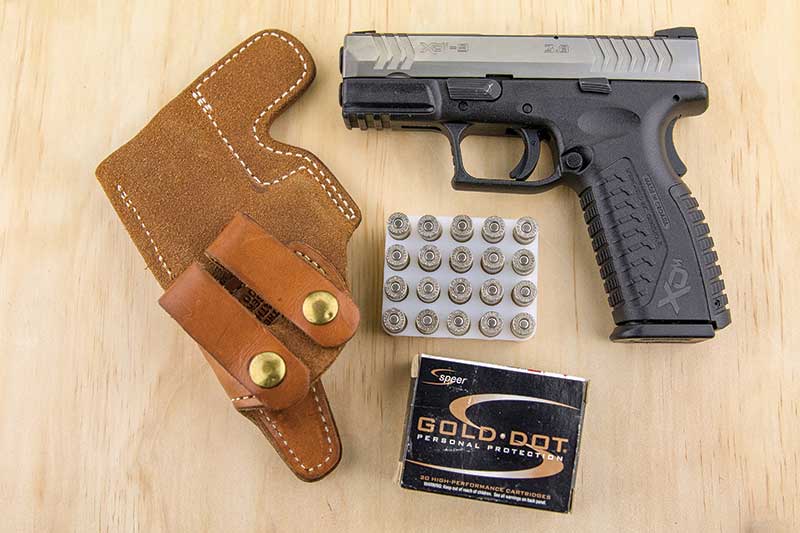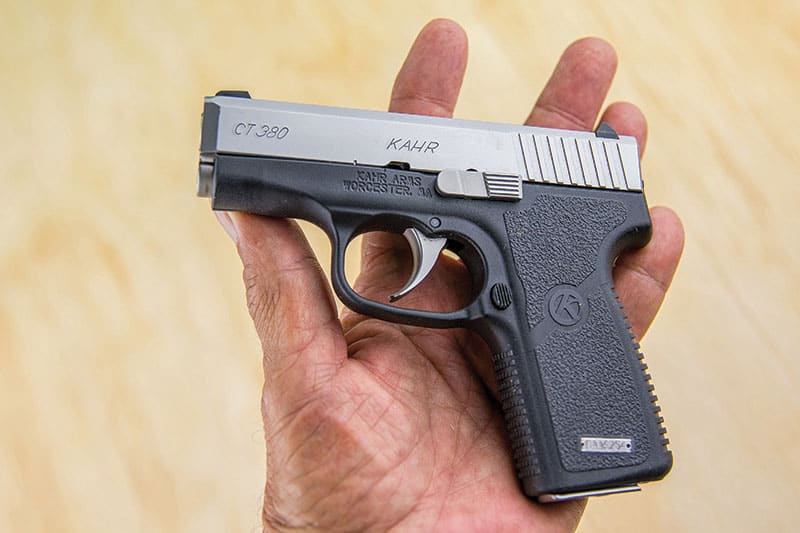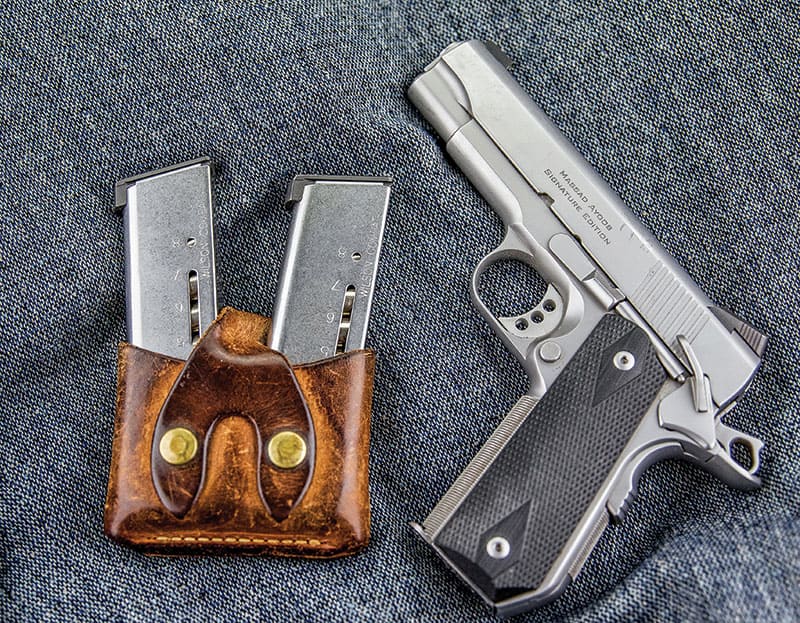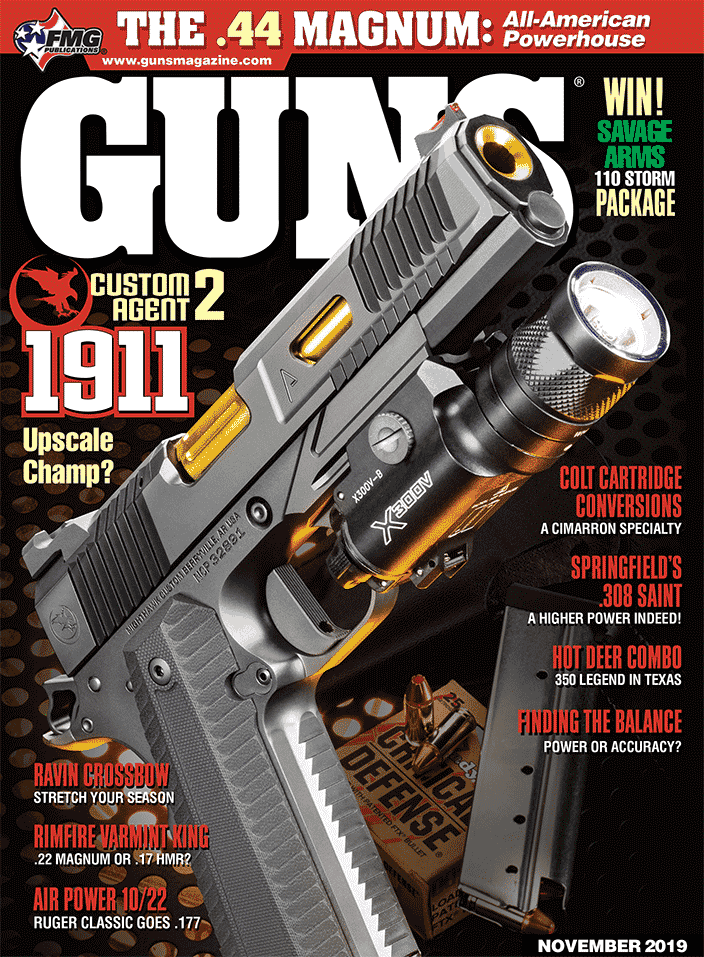EDC: Striking a Balance
Whatever works, works
One man’s mouse gun is another man’s cannon. It’s a debate that will never die.
I’ve said it before, but it bears repeating: There’s a cliche on the gun-related internet and “around the cracker barrel at the gun shop” which, in effect, says, “Anyone who carries more hardware than me is a paranoid ‘mall ninja,’ and all who pack less than I do are helplessly doomed ‘sheeple.’ ”
It’s a theme worthy of critical examination.
I started carrying a gun when working part-time in my father’s jewelry store at the age of 12. The year was 1960. (Do the math yourself; it’s too depressing for me to count all those years.)
In all the decades since, if I’ve learned anything, it’s this: Insofar as hardware choices, it’s less likely to come down to what type or caliber gun you have, nor how many rounds it holds or how many more you have on your belt. It will probably come down to “Did you have a damn gun?”
Heart Of The Matter
From the 1970s on, studies have shown the vast majority of successful Defensive Gun Usages (DGUs) have not involved shooting The Bad Guy. Instead, they have centered around The Bad Guy realizing he was about to be shot by The Good Guy (or Gal), and as the great police self-defense instructor Arthur Lamb of Boston PD used to put it, “re-evaluating their negative attitude.”
Did you have a gun? Did you get your gun deployed before The Bad Guy could harm you? Did you project enough resolve to make him realize if he continued his attack, he would very likely die where he stood? If he still continued the assault, were you able to put bullets where they would render him incapable of succeeding? Only after those criteria have been met will it matter a rodent’s anus what size, shape and speed of the bullets you launched, and how many of those bullets you had on tap to start with. In the minority of cases — where the good people have to shoot — a huge number of surveillance films of gunfights show the bad guys breaking and running as soon as they come under fire.
And when it’s so bad the aggressor continues to aggress, the universal agreement of experts is this: What stops the bad guy more than anything else is where each bullet hits him, and what parts of his body the bullets cause to stop working.
Choices, Competence, Confidence
As a kid into guns, I had read the early writings of Jeff Cooper in Guns & Ammo. The gun I most often carried in the store was a Colt .45 auto loaded with 230-gr. hardball, which was pretty much the only defensive load you could buy for this caliber over the counter. As time went on, we learned jacketed hollow points were better and higher-tech JHPs better still. But those same ammo concepts jacked up the effectiveness of the 9mm Luger cartridge proportionally even more. Though I finished 43 years as a part-time cop carrying a .45 with 230-gr. +P Federal HST, I no longer felt undergunned carrying 9mm rounds. They had proven themselves to be highly effective on the street — a 115-gr. JHP at 1,300 fps, a 127-gr. Winchester Ranger JHP at 1,250, Speer’s 124-gr. +P Gold Dot at 1,220, etc.
As a young man, and even as a young patrolman off-duty, I felt comfortably armed carrying a five-shot .38 snub and no spare ammo. Research into gunfights and some personal experiences changed my mind and I quickly learned to relegate 5-shot capability to backup guns and carry more firepower even when I wasn’t serving the public. I had debriefed men who carried .380 autos, .32s, and .38 snubs who told me they didn’t take action when they should have because when the life-or-death moment came, they didn’t think they had enough firepower to win the gunfight, and they regretted their hesitation forever after.
Research and collective experience teach us confidence and competence intertwine inextricably. Confidence breeds a certainty of competence to allow unhesitating rescue action when necessary, and competence in turn creates confidence to overcome potentially tragic hesitation. This all translates into carrying a gun you can shoot well and know you can hit with under extreme stress. It must have enough power to damage large, aggressive, ragingly homicidal mammals, and enough ammunition — both in-gun and readily accessible for fast reloading — to get the bullets where they need to go in order to swiftly end a lethal threat to innocent human life and limb.
And yes, it is complicated … which is why we continue to debate these issues.

Sign up for the Personal Defense newsletter here:






